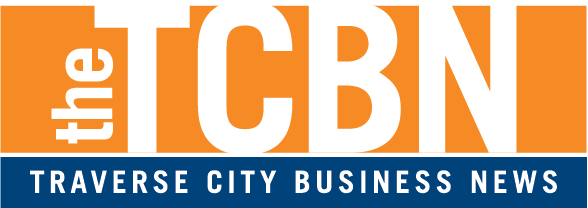
Traverse City Business News by Casey Cowell November 2019
Tourism is here to stay, and the yearly number of visitors to our area continues to climb. It’s no wonder. Those of us who live here year round know the value of what tourists come for: thriving towns, culture and recreation, beautiful land and fresh water. But with greater numbers of people – and with high-impact events designed to draw visitors to Traverse City – come new burdens.
In the summer, our streets are clogged with cars or closed completely, and many locals stay home or leave town to avoid event crowds. The Ticker recently reported a substantial increase in summer airport traffic and a short-term rental boom. More people means more pressure on our public amenities and services. Last year, city police received 2,400 more service calls in the third quarter (summer months) than in the first quarter (winter months). We watch our roads, sidewalks, parks, beaches, rivers and lakes take a beating.
In Michigan, there are no formal systems in place for direct application of tourism revenue to support impact mitigation. By state law, local lodging assessment (the so-called “tourist tax” or “bed tax”) dollars go directly to tourism bureaus for promotion and marketing, creating what has become a closed loop: more overnight visitors generate higher assessment fees leading to bigger marketing budgets designed to put more “heads in beds.” Locally these funds total millions of dollars per year.
The benefits of tourism are recited again and again – jobs created, dollars spent – but what about the flip side? And what should we do about it?
We’re not the first community to market our attractions, benefit from tourism spending, and then suffer the unwelcome impacts of overtourism. Globally, communities and groups are rethinking the problems and solutions. Prompted by fed-up residents, Amsterdam, Paris, Barcelona and Venice have recently made the news for regulating or outright discouraging visitors. Norway is developing national sustainable tourism policies and practices. Sustainable tourism codes have been implemented in Cape Town and other cities.
The Global Sustainable Tourism Council in the U.K. and Harvard University’s International Sustainable Tourism Initiative are just two of many groups partnering with municipalities to put better policies in place.
In some cases of overtourism, public-private partnerships have evolved to manage the tourism flow. This spring, the Chamber of Commerce & Tourism Bureau in Sedona, Arizona partnered with its city council to sign a sustainable tourism plan to protect its “natural beauty, community character and livability while maintaining a vital economy.” The state of Utah recently backed off from a national park marketing campaign that overloaded the parks and small, ill-equipped gateway towns alike. Locals pushed back and the state listened: It redirected its marketing message.
In Wyoming, heavily touristed Jackson (population 10,000) and Teton County also took matters into their own hands: residents voted in a 2% local tourism tax on lodging only after the state lowered the portion of revenue used for promotion from 90% to 60% and earmarked the remaining 40% for tourism impact mitigation. The tourism board, city and county share responsibility for the allocation of that tax revenue to public infrastructure and services – tourism revenue applied directly to impact mitigation.
Similarly, cities like San Francisco use municipal tourist taxes to support the arts and other civic institutions. Whether mitigation or support of arts and culture, these examples prove that benefits of tourism can enrich and better the communities and towns that attract tourists in the first place.
The point is this: Our community could also decide to manage tourism proactively in a systematic, responsible way and for the benefit of the people who live and work here. And we should – before tourism’s effects erode the community’s integrity, fabric and assets.
Common among conscientious efforts to mitigate the effects of tourism is the goal of maximizing economic benefit while minimizing tourism’s negative impacts. Here, we could refocus our message and emphasize events and enterprises that sustain year-round employment. What if we changed our pitch? Visit our region to take advantage of our world-class arts and educational institutions, unique industries and four-season outdoor activities.
Another approach is to rebalance our economy. This takes strategy and work. It takes prioritizing long-term development over a quick buck. Boomerang Catapult’s approach and investments have produced stunning results. Every dollar that we’ve invested in Traverse City startups has resulted in eight more investment dollars raised. The total: More than $60 million into Traverse City companies in less than three years. Four of those companies alone have created 72 new jobs. This is significant investment with truly valuable return.
This kind of investment in a durable economy works. In a time when businesses can locate anywhere, attracting and retaining new high-value enterprises and their workers should be paramount for the Traverse City region. Incentives like the Opportunity Zone and the city/MEDC Redevelopment Ready Community effort are in place. People motivated to move or start businesses here are the people who join neighborhoods, pay taxes and sustain our community for the long haul and year-round.
By contrast, further promotion of our region via summertime headline events is an unsustainable investment strategy. Even with allocation of funds for impact mitigation this approach risks our “natural beauty, community character and livability.”
The best promotion of Traverse City would be a forward-thinking, collaborative, private-public approach that puts tourism decisions and dollars towards a cleaner, safer, tighter-knit, more vibrant, equitable and sustainable community. Others are doing it, and we can, too. Let’s make a start!
Photo: Jill Cook




